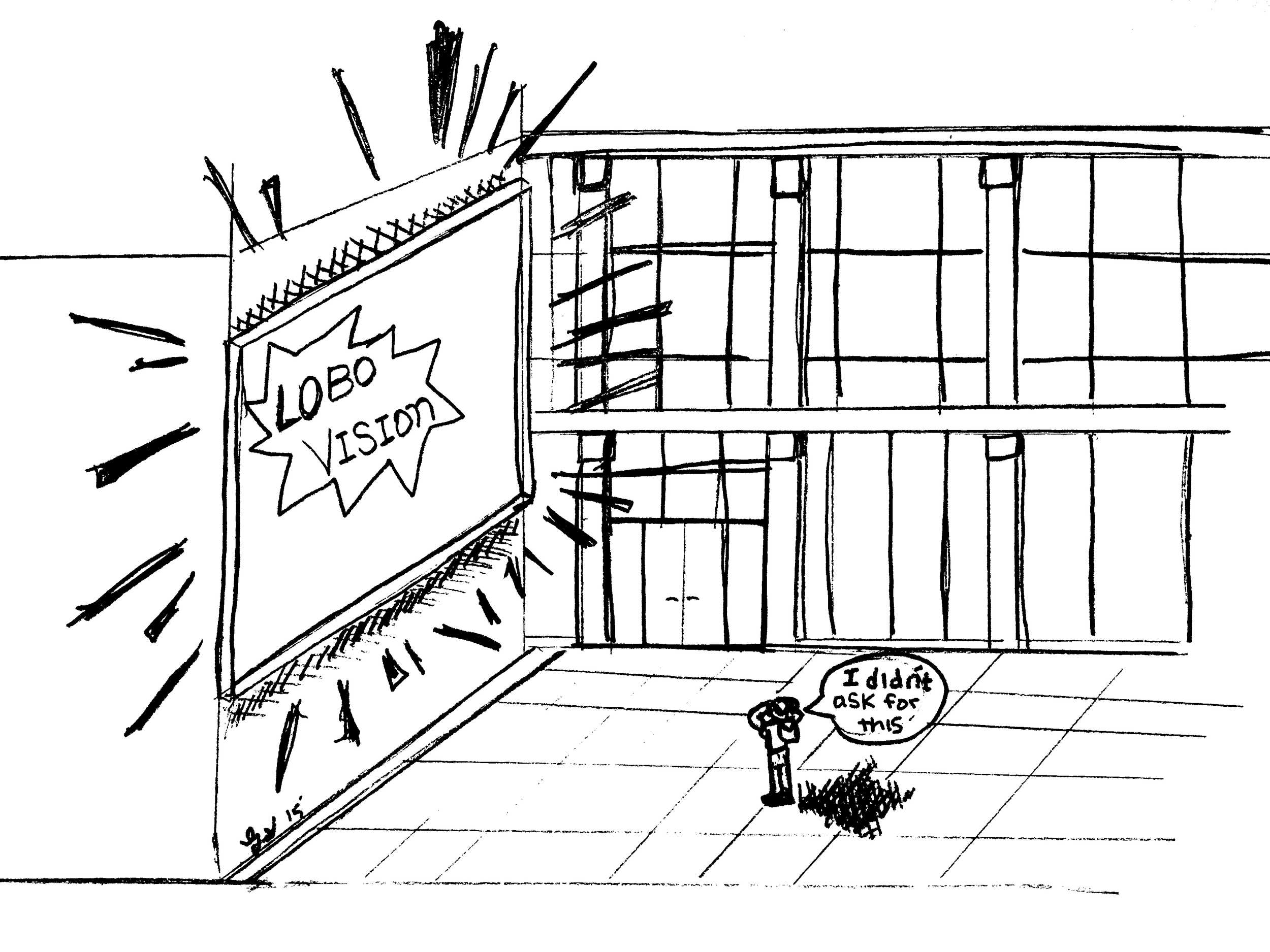COURTESY // Gustavo Vasquez
Sonoma State University’s Seawolf Plaza has been illuminated by the bright light of the newly-installed LoboVision, intended to make students more aware of events on campus. Installed only two weeks ago, LoboVision has already become a topic of controversy among students — and for good reason.
Many agree Sonoma State students have a certain level of disinterest or unawareness when it comes to campus events and involvement — but can that lack of awareness truly be fixed by a nearly 300-square-foot television screen broadcasting advertisements every waking moment? In a matter of days after LoboVision came to life, students took to social media to express their frustrations with the giant television screen. They questioned how the university has enough money to pay for a giant TV screen but can’t afford to provide enough classes for students to graduate in four years. The Campus Rec Center made clear on its website the money “cannot be used for classes, faculty salary or other purposes not related to capital improvements.” However, this isn’t the only issue.
In a world where young people are surrounded by digital screens at every moment of the day, whether a cell phone, computer, iPad or television, the last thing Sonoma State students need is another screen – especially one this size. The idea of LoboVision — the inspiration behind it — makes sense. Students don’t know what’s going on and don’t get involved — and the bulletin boards around campus just aren’t cutting it when it comes to making students more aware. What is hard to understand is the rationale behind LoboVision itself. Who came up with this idea and why did someone believe students would actually be happy about a giant screen that costs more than 62 times of one student’s tuition fees at Sonoma State?
According to university officials, the cost of LoboVision was $340,000 and was funded through a capital improvement fund only for repairs, improvements or renovations at the Student Center or Recreation Center. Putting the cost of LoboVision into perspective, with $340,000, a student could buy approximately 10 cars, nearly 18 years worth of rent in an average-priced apartment in Sonoma County or travel around the world extensively. Instead of cars, an apartment and a long, lavish vacation, students are getting a giant TV screen that is nearly the size of a small studio apartment at 300-square-feet.
Putting the cost aside, students have to believe LoboVision was created with good intentions — at least one can hope. Was LoboVision created with students’ interests in mind or was it simply another attempt to make Sonoma State look like the flashiest, most luxurious university on the block? In terms of luxury, Sonoma State is by no means stingy. In this millennium alone, Sonoma State has transformed into a nearly unrecognizable campus.
LoboVision is up and running and is most likely here to stay, whether students like it or not. But we wonder whether LoboVision is another example of the university providing something students asked for or giving something that administrators felt the university needed — something one can only hope will change with the new university president in the fall.





![[Both photos courtesy of sonoma.edu]
Ming-Ting Mike Lee stepped in as the new SSU president following Sakakis resignation in July 2022](https://sonomastatestar.com/wp-content/uploads/2024/04/CC4520AB-22A7-41B2-9F6F-2A2D5F76A28C-1200x1200.jpeg)



























